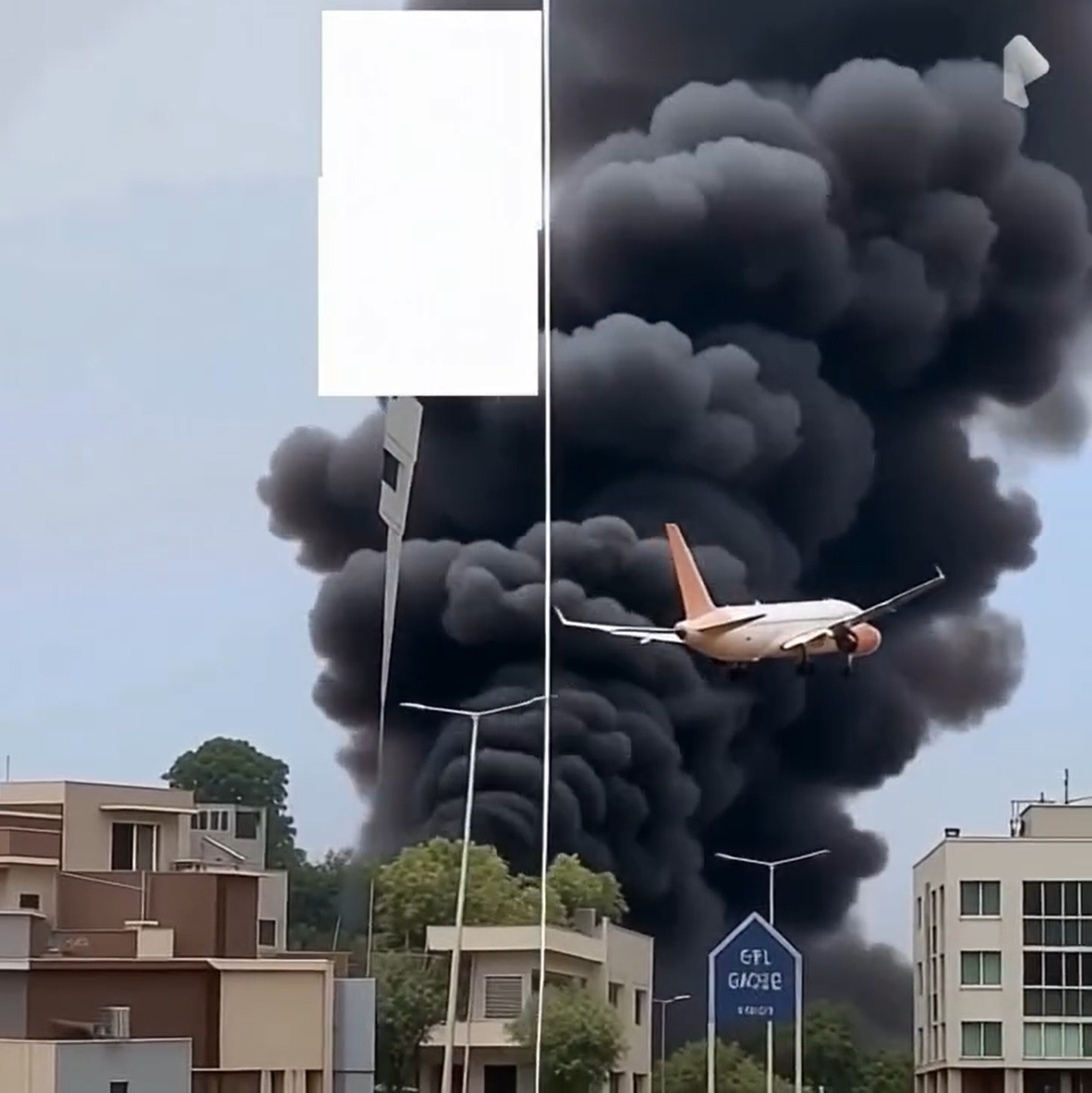The world is in shock after reports of a terrible plane crash that may have killed over 240 people. A routine commercial flight turned into a disaster, with thick black smoke rising from the wreckage and rescue teams racing to find survivors.
Authorities confirmed the crash shortly after the first distress signals. The plane, carrying 244 passengers and crew, lost contact with air traffic control before disappearing from radar. Emergency responders rushed to the remote site, where fires had already broken out. Firefighters, paramedics, and search teams worked to locate anyone who might have survived.
Eyewitnesses described a horrifying scene. “It fell very fast,” one local resident said. “There was a huge flash and then a wall of fire. The ground shook.” Explosions were heard moments after impact. Many who saw it say the sounds of screaming, crying, and burning metal are unforgettable.
Officials have shared few details. The airline, flight origin, and destination have not been revealed, leaving families anxious and confused at airports worldwide. Loved ones wait for news, staring at flight boards and holding their phones.
It is too early to know the cause. Investigators are considering all possibilities—mechanical failure, pilot error, or something more serious. Aviation experts suggest a chain of failures may have led to the crash.
“Right now, we are investigating everything,” said a senior investigator. “There were no weather warnings, and early data shows the plane seemed normal before contact was lost. That is worrying.”
Hospitals have activated emergency plans. Blood donation centers are busy with volunteers, and temporary shelters have been set up for rescue workers and families.
As night fell, news outlets showed images of the wreckage—twisted metal, scattered luggage, and personal items. The scenes have caused grief and disbelief worldwide.
“This is one of the darkest days in aviation history,” said a government spokesperson. “We are doing everything to find out what happened and support the families.”
Rescue efforts continue, though hope is fading. Workers in heat-resistant suits fight the fire, while drones search inaccessible areas for survivors. Local communities provide food, water, and support to the teams, showing unity amid tragedy.
Airlines and aviation authorities are monitoring the situation. Flights near the crash site have been rerouted, and countries have offered help for the investigation.
Recovering the plane’s black boxes—cockpit voice recorder and flight data recorder—will be crucial. These devices, built to survive extreme conditions, could reveal the final moments of the flight, pilot communications, and system failures.
Experts say the crash may not have been caused by weather or turbulence. “A rapid mechanical failure is possible,” said aviation analyst Mark Taylor. “The sudden loss of communication is concerning. Pilots are trained to make distress calls even during emergencies. That didn’t happen, which suggests something sudden and catastrophic.”
Online, theories about engine failure or sabotage have spread. Authorities warn against speculation, emphasizing that investigations take time and must rely on verified facts.
International leaders have expressed condolences and support. Vigils are being held worldwide, with candles for passengers who lost their lives.
Families at airports shared their heartbreak. One woman said her brother sent a text from the plane, excited to come home for the holidays—that was the last message they received. Another family learned about the crash from social media before any official notice.
Government officials promise full transparency. “No possibility will be ruled out,” said a transport authority representative. “We need to know the exact cause so this never happens again.”
This tragedy is among the deadliest air disasters in recent memory. Rescue crews continue to work, identifying victims and collecting evidence. DNA testing is helping families confirm the fate of loved ones.
In the coming weeks, experts from multiple countries will reconstruct the aircraft from fragments to find the truth.
Until then, questions remain: was it a mechanical failure? A pilot mistake? Or something else?
One fact is clear: 244 lives were lost instantly. Families are devastated, and nations mourn. The hope is that this tragedy will lead to stronger safety measures, better oversight, and a renewed commitment to preventing similar disasters.
As dawn rises over the crash site, the harsh reality remains: every flight has a story, but some end far too soon.
